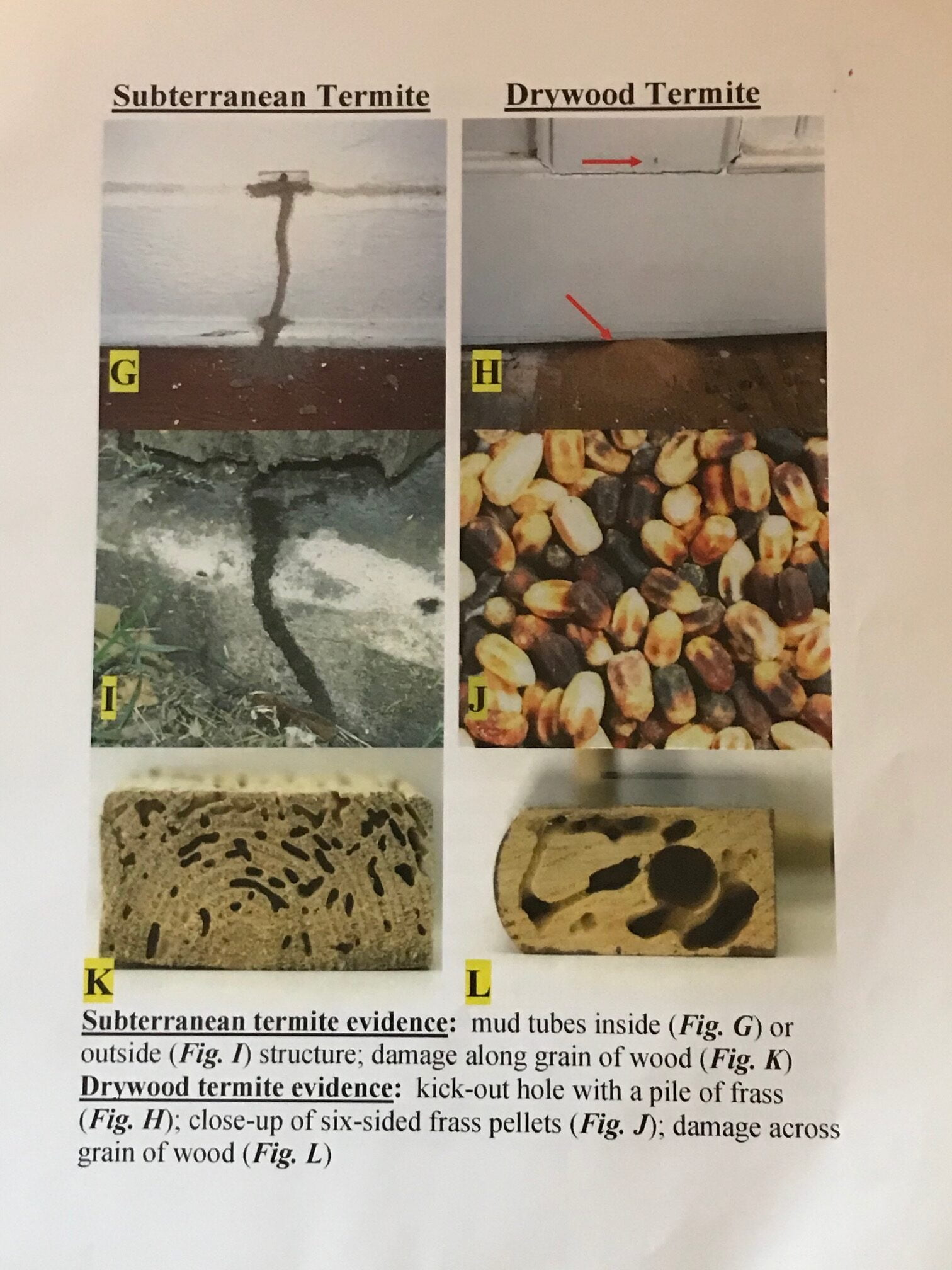DURR ENVIRONMENTAL SERVICES
FORMOSAN TERMITE EXPERTS
TERMITE CONTROL
WE SERVICE FOR:
Residential & Commercial Treatments
Pre-Construction Treatments
Tree Termite Treatments
Real Estate
Wood Destroying Insect Reports
Bora Care Wood Preservative Services
We provide a free, no obligation inspection and quote for Wood Destroying Insect services, (Subterranean and Formosan termites, Carpenter Bees, Powder Post Beetles), tree treatments, and Bora Care Wood Preservative Service.
Each termite treatment comes with a 1 year written guarantee. Any additional servicing needed will be covered at no additional cost. Your contract can be extended on a year-by-year basis upon payment of an annual renewal fee and thorough termite inspection. It is highly recommended that a complete termite retreatment, at an additional cost, be completed every 5 years to maintain your strong termite barrier.
TYPES OF TERMITES
Formosan Subterranean Termite "Soldier"

Eastern Subterranean "Soldier"

Termite Identification Guide of Louisiana and Mississippi
STARTING A NEW COLONY
Termites swarm in the early spring months when environmental conditions such as temperature, moisture, and light are suitable. Worker termites construct mud tubes and usher swarmer termites out for their annual mating season. Formosan Termites swarm in the evening hours between the months of April-July. Native Subterranean termites swarm in February-April.
Food and Foraging
Foraging termites consume cellulose material, the most common source of which is wood. Native Subterranean Termites can forage up to 225 feet from the colony in the soil. Formosan termites can forage up to 450 feet from the colony. Once enough wood has been consumed by the Formosan Termites, they form above ground nests referred to as carton nests which retain moisture and allow the above ground termites to function independent from the parent colony in the soil.

Carton Nest
What Termite Program is Best for my Property?
We offer a two-phase termite protection program for pre-construction work.
- Pre-treat soil at 100 gallons of finished product termiticide per 1000 square feet.
- Once construction and landscaping is completed, we will establish a termite prevention zone around the perimeter of the foundation and/or piers, as well as bath traps on ground level. A thorough inspection of the premises is performed to locate conditions that may encourage termite activity.
Conventional Ground Treatment
Ground treatments are the most common way to protect property against Formosan and Native Termites. This calls for treating all soil adjacent to the foundation slab or piers with liquids, foam, etc. and forming a treated zone between the soil and the structure to prevent termite entry.
Baiting System
When conventional ground treatment is not possible, supplemental treatments are necessary or if requested by the customer, we offer termite baiting systems. The bait is taken to the colony when the bait comes into contact by the termites. Consumption and contact of the bait will cause the termite colony to decline, and by continued consumption, the remaining termites will result in the elimination of the colony.
TERMITE CONTROL
WE SERVICE FOR:
Residential & Commercial Treatments
Tree Termite Treatments
Pre-Construction Treatments
Real Estate
Wood Destroying Insect Reports
Bora Care Wood Preservative Services
We provide a free, no obligation inspection and quote for Wood Destroying Insect services, (Subterranean and Formosan termites, Carpenter Bees, Powder Post Beetles), tree treatments, and Bora Care Wood Preservative Service.
Each termite treatment comes with a 1 year written guarantee. Any additional servicing needed will be covered at no additional cost. Your contract can be extended on a year-by-year basis upon payment of an annual renewal fee and thorough termite inspection. It is highly recommended that a complete termite retreatment, at an additional cost, be completed every 5 years to maintain your strong termite barrier.
TYPES OF TERMITES
Formosan Subterranean Termite "Soldier"

Eastern Subterranean "Soldier"

Termite Identification Guide of Louisiana and Mississippi
STARTING A NEW COLONY
Termites swarm in the early spring months when environmental conditions such as temperature, moisture, and light are suitable. Worker termites construct mud tubes and usher swarmer termites out for their annual mating season. Formosan termites swarm in the evening hours between the months of April-July. Native Subterranean termites swarm in February-April.
Food and Foraging
Foraging termites consume cellulose material, the most common source of which is wood. Native subeterranean termites can forage up to 225 feet from the colony in the soil. Formosan termites can forage up to 450 feet from the colony. Once enough wood has been consumed by the Formosan termites, they form above ground nests referred to as carton nests which retain moisture and allow the above ground termites to function independent from the parent colony in the soil.

Carton Nest
What Termite Program is Best for my Property?
We offer a two-phase termite protection program for pre-construction work.
- Pre-treat soil at 100 gallons of finished product termiticide per 1000 square feet.
- Once construction and landscaping is completed, we will establish a termite prevention zone around the perimeter of the foundation and/or piers, as well as bath traps on ground level. A thorough inspection of the premises is performed to locate conditions that may encourage termite activity.
Conventional Ground Treatment
Ground treatments are the most common way to protect property against Formosan and Native Termites. This calls for treating all soil adjacent to the foundation slab or piers with liquids, foam, etc. and forming a treated zone between the soil and the structure to prevent termite entry.
Baiting System
When conventional ground treatment is not possible, supplemental treatments are necessary or if requested by the customer, we offer termite baiting systems. The bait is taken to the colony by when the bait comes into contact by the termites. Consumption and contact of the bait will cause the termite colony to decline, and by continued consumption, the remaining termites will result in the elimination of the colony.




